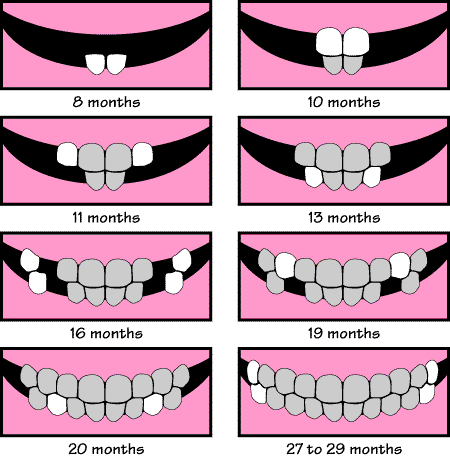While every child is different, there is a general time frame for when baby teeth appear in a child's mouth. In dental terms, we refer to this as tooth "eruption"; the normal loss of a baby tooth as it becomes loose is called "exfoliation."
The general pattern is as follows: the first teeth to appear are the lower central incisors, which are the bottom front teeth. Then, the upper central incisors, or top front teeth come in. Then the teeth or either side of these come in -- the lateral incisors -- with the lower teeth usually emerging before the matching top teeth.
Next, molars appear! The appearance of the molars will create a space on the bottom and top that will later be filled in by the canine teeth, which have a more pointed edge. The last baby teeth that come in are the second set of molars in the very back. They usually appear around the time of a child's second birthday.
So that makes twenty baby teeth in all! A child will have these teeth until around six years old when permanent teeth begin to make their appearance. While every child is different, this chart gives a good overview about when you can expect which tooth. Don't worry if your child doesn't match up exactly with these ages. In general, you can add or subtract a few months for an idea of the normal age range.



